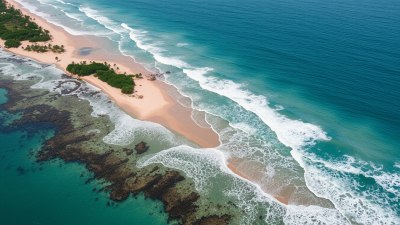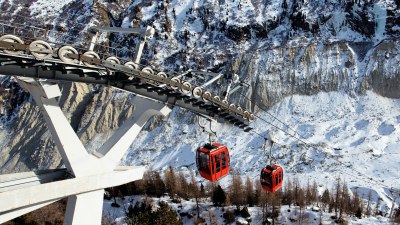Following the Shoreline Before It’s Gone
Explore the urgent need to monitor and preserve coastal shorelines facing climate change threats.

Image created with Flux Schnell
As the world continues to grapple with climate change, the impacts on coastal ecosystems are becoming increasingly apparent. Rising sea levels, increased storm intensity, and changing weather patterns are posing significant threats to shorelines around the globe. The urgency to take action and follow the shoreline before it’s irrevocably altered has never been greater.
Understanding Shoreline Dynamics
Coastal shorelines are dynamic systems, constantly shaped by natural processes such as wave action, sediment transport, and tidal movements. However, human activities such as urban development, industrialization, and deforestation have exacerbated the vulnerability of these areas. Understanding the natural dynamics of shorelines is crucial for developing effective conservation strategies to protect these vital ecosystems.
The Impact of Climate Change on Coastal Areas
Among the most pressing issues facing shorelines is rising sea levels, predicted to rise between 0.3 and 2.5 meters by the year 2100. This increase is largely due to melting ice sheets and glaciers, along with the thermal expansion of seawater as it warms. As a consequence, low-lying coastal areas are already experiencing inundation, leading to loss of habitat, displacement of communities, and increased salinity in freshwater resources.
Waves and Erosion
In addition to rising sea levels, increased storm activity and more intense waves are eroding shorelines at an alarming rate. Historical data indicates that some areas are losing up to 10 feet of land per year due to coastal erosion. This phenomenon not only threatens coastal structures but also disrupts natural habitats for marine and terrestrial wildlife. Erosion can lead to the loss of crucial nesting and breeding grounds for various species, including sea turtles and shorebirds.
The Role of Vegetation
Coastal vegetation plays a vital role in stabilizing shorelines. Plants such as mangroves, salt marshes, and seagrasses can significantly reduce erosion by trapping sediments and dissipating wave energy. These ecosystems also provide essential habitats for diverse species and serve as critical buffers against storm surges. Protecting and restoring coastal vegetation is an integral part of any shoreline conservation strategy.
Adaptive Management Strategies
In response to the threats posed by climate change, coastal management strategies are becoming more adaptive and integrated. These strategies involve a combination of maintaining natural buffers, implementing engineered solutions, and promoting sustainable practices. For example, in some areas, planners are using nature-based solutions such as wetland restoration and the construction of living shorelines to address erosion while enhancing biodiversity.
Monitoring Shorelines
Effective monitoring is essential for understanding the changes occurring along shorelines. Advances in technology, including remote sensing and Geographic Information Systems (GIS), enable researchers and policymakers to gather data on shoreline position, erosion rates, and changes in habitat types. Continuous monitoring allows for timely interventions to mitigate the impacts of climate change and human activities.
The Role of Communities
Community involvement is critical in shoreline protection efforts. Local communities often possess invaluable knowledge about their coastal environments and can aid in monitoring and conservation initiatives. Engaging communities in shoreline management not only fosters greater awareness but also promotes stewardship and ownership of coastal resources.
Policy Frameworks and Legislation
Effective policy frameworks are essential for coastal protection. Governments at all levels must develop and enforce regulations that promote sustainable land use and protect coastal ecosystems. This may include zoning laws that prevent development in vulnerable areas, incentives for restoration projects, and funding for research initiatives focused on shoreline preservation.
International Collaboration
Coastal issues often transcend national borders, making international collaboration crucial. Countries facing similar threats can share knowledge, resources, and technologies to address coastlines' challenges. Regional agreements and transboundary initiatives can lead to more effective responses to shore erosion, habitat loss, and biodiversity conservation.
Innovative Solutions
The implementation of innovative solutions is vital in combating shoreline degradation. Projects that incorporate green infrastructure, such as artificial reefs and oyster beds, can enhance marine habitats while also protecting coastlines from erosion. Moreover, advancements in engineering and materials science are leading to the development of more resilient coastal structures that work in harmony with nature.
Community Awareness and Education
Building awareness about the importance of coastal ecosystems is paramount. Educational programs can empower communities to take action in protecting their shorelines. Schools, local organizations, and conservation groups can work together to raise awareness about the biodiversity found in coastal zones and the impact of climate change. Greater public awareness leads to increased motivation to implement protective measures.
Case Studies in Coastal Restoration
Throughout the world, numerous case studies demonstrate successful shoreline restoration efforts. Programs that restore mangrove forests in Southeast Asia have shown significant reductions in erosion while enhancing fish populations. Similarly, the reconstruction of salt marshes in the United States has not only increased biodiversity but has also bolstered the resilience of coastal communities. These success stories serve as blueprints for future restoration projects.
As we navigate the complexities of climate change and its impact on coastal shorelines, it is imperative that we take proactive measures now. Following the shoreline before it's gone requires a multifaceted approach that includes understanding natural dynamics, implementing adaptive management strategies, engaging communities, and fostering international collaboration. Only through concerted efforts can we hope to preserve these critical ecosystems for future generations.











